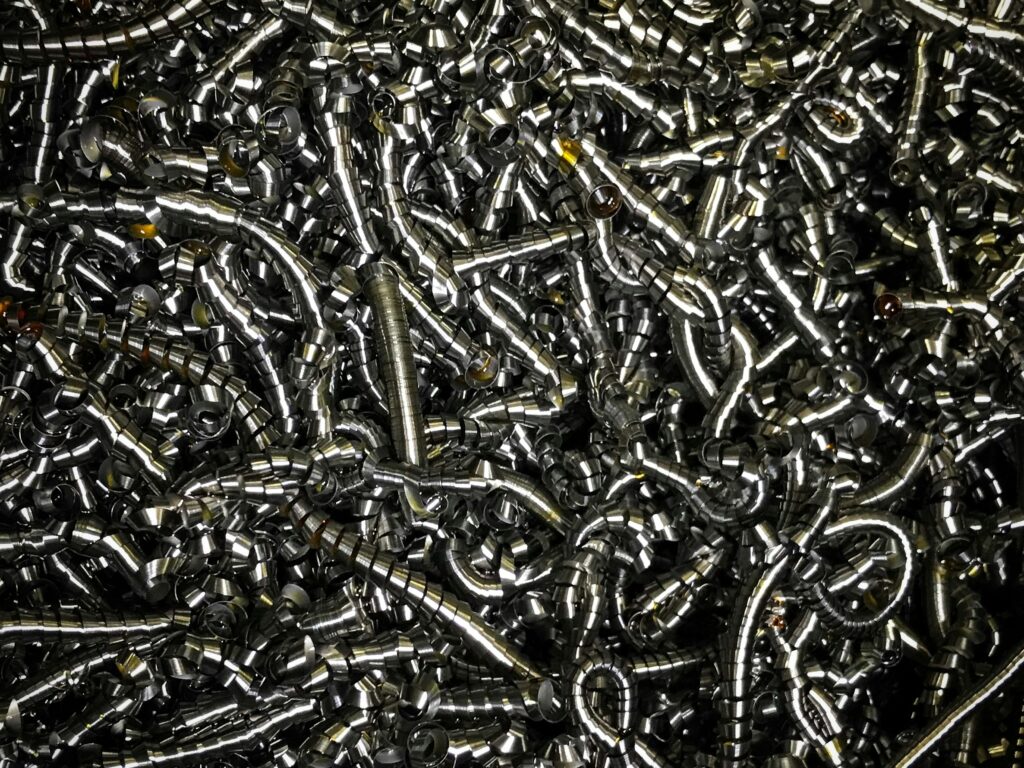Car balers are specialised machines designed to compact and process end-of-life vehicles (ELVs) or scrap cars into dense bales of metal for recycling purposes.These machines are a cornerstone in the recycling industry, particularly for the automotive sector, as they efficiently transform bulky and often unwieldy car bodies into manageable bundles of scrap metal.

Car balers, such as those proposed by Ing. Bonfiglioli, play a pivotal role in maximising the value of scrap metal derived from end-of-life vehicles.
The process of car baling
The process of car baling begins with the preparation of end-of-life vehicles (ELVs). This involves removing hazardous materials like batteries and fluids to ensure safe processing. Once prepared, the ELVs are fed into the car baler, either manually or via conveyor systems, depending on the machine’s design.
The car baler utilises powerful hydraulic systems to compress the metals from industrial plants or demolition waste, and automotive waste exerting immense pressure to compact them into dense bales. This compression significantly reduces the volume of waste while increasing their density. As the automotive waste are compressed, integrated shearing mechanisms or blades may be employed to cut through the metal, facilitating the formation of uniform bales.
Once the compression and shearing process is complete, the compacted bales are ejected from the car baler, often automatically using hydraulic rams or other mechanisms. In some cases, additional binding materials such as wires or straps may be used to secure the bales, preventing them from coming apart during transportation or handling.
Before being transported for further processing or sale, the bales may undergo quality control checks to ensure they meet specified standards in terms of size, density, and composition. Car balers are capable of processing a variety of materials commonly found in end-of-life vehicles, including steel, aluminium, copper, and other metals.
Overall, car baling efficiently transforms automotive waste into manageable and transportable bales of scrap metal, contributing to the sustainability and economic viability of the recycling industry.
Economic benefits of using car balers
The economic benefits of using car balers for businesses in the recycling and automotive sectors are substantial:
- increase the efficiency: firstly, car balers increase the efficiency of scrap metal processing by compacting end-of-life vehicles (ELVs) into dense bales, reducing their volume and facilitating easier handling and transportation;
- cost and storage space reduction: the overall efficiency translates into cost savings for businesses by lowering transportation costs and reducing the need for storage space;
- enhance the overall value of the recycled material: by compacting scrap metal into uniform bales, these machines improve the quality of the material, making it more desirable for metal recyclers and manufacturers. This increases the market value of the recycled metal, enabling businesses to command higher prices for their processed scrap;
- maximise the utilisation of resources: additionally, car balers help businesses maximise the utilisation of resources by extracting valuable metals from ELVs that would otherwise go to waste. This not only generates revenue from selling recycled metal but also reduces the demand for virgin materials, leading to further cost savings and environmental benefits;
Environmental impact and sustainability
Car balers play a crucial role in environmental sustainability by significantly reducing landfill waste, saving energy, and decreasing the carbon footprint associated with the production of new metals. Car balers compact automotive waste into dense bales, reducing their volume and diverting them from landfills. This helps mitigate the environmental impact of automotive waste by minimising the space occupied in landfills and preventing the release of harmful pollutants and toxins from decomposing vehicles.
The recycling process consumes considerably less energy compared to the extraction and refining of new metals, leading to significant energy savings. Additionally, recycling metal produces fewer greenhouse gas emissions compared to the production of new metal, resulting in a decreased carbon footprint.
Key considerations when choosing a car baler
When choosing a car baler for a business, several key considerations should be taken into account to ensure it aligns with the specific needs of the recycling operation. Firstly, size is an important factor to consider, as the baler should fit within the available space in the facility without causing congestion or hindering operations. It’s essential to assess the dimensions of the baler and compare them with the available space to ensure compatibility.
Secondly, power requirements must be evaluated to ensure that the baler can be adequately powered within the facility. This includes considering electrical supply specifications and whether the baler’s power consumption aligns with the available resources.
Capacity is another crucial consideration, as it determines the volume of end-of-life vehicles (ELVs) that can be processed within a given timeframe. Businesses should assess their average throughput requirements and choose a baler with a suitable capacity to meet demand efficiently.
Additionally, features such as automation, hydraulic system efficiency, and safety mechanisms should be carefully evaluated. Automation can enhance productivity and reduce manual labour, while advanced safety features ensure operator wellbeing and compliance with regulations.

